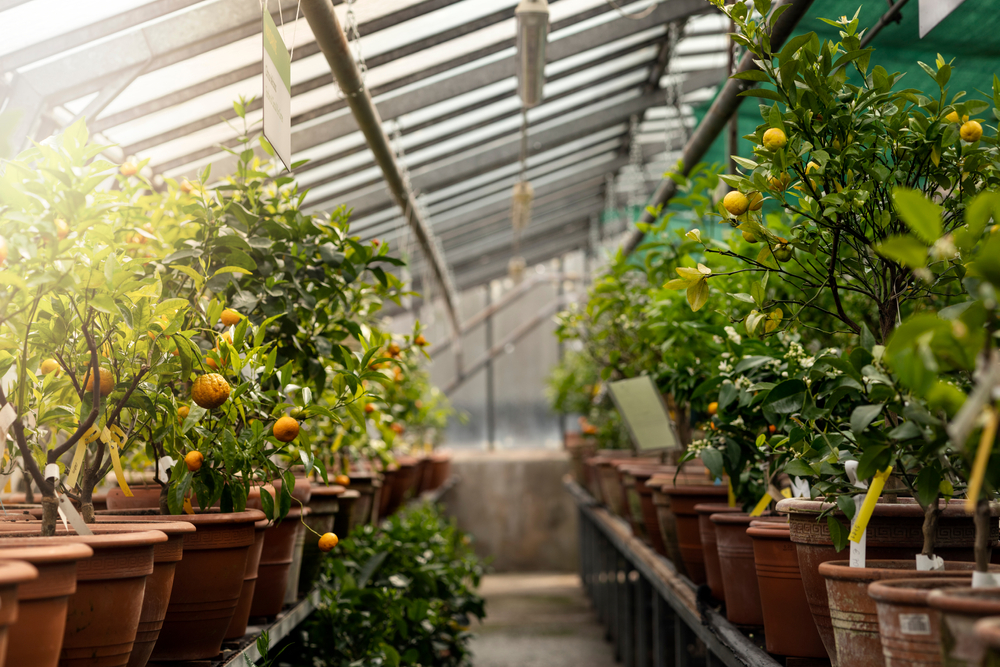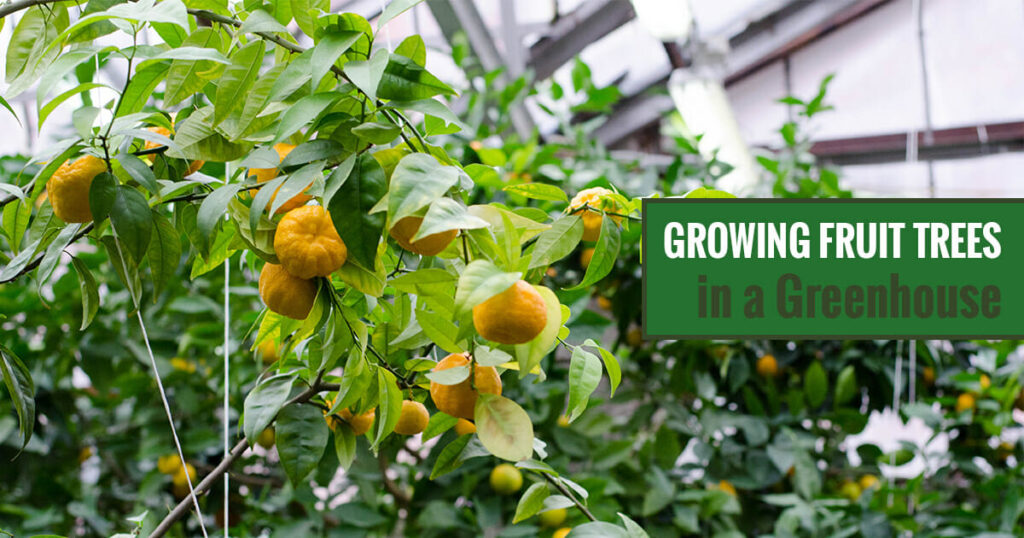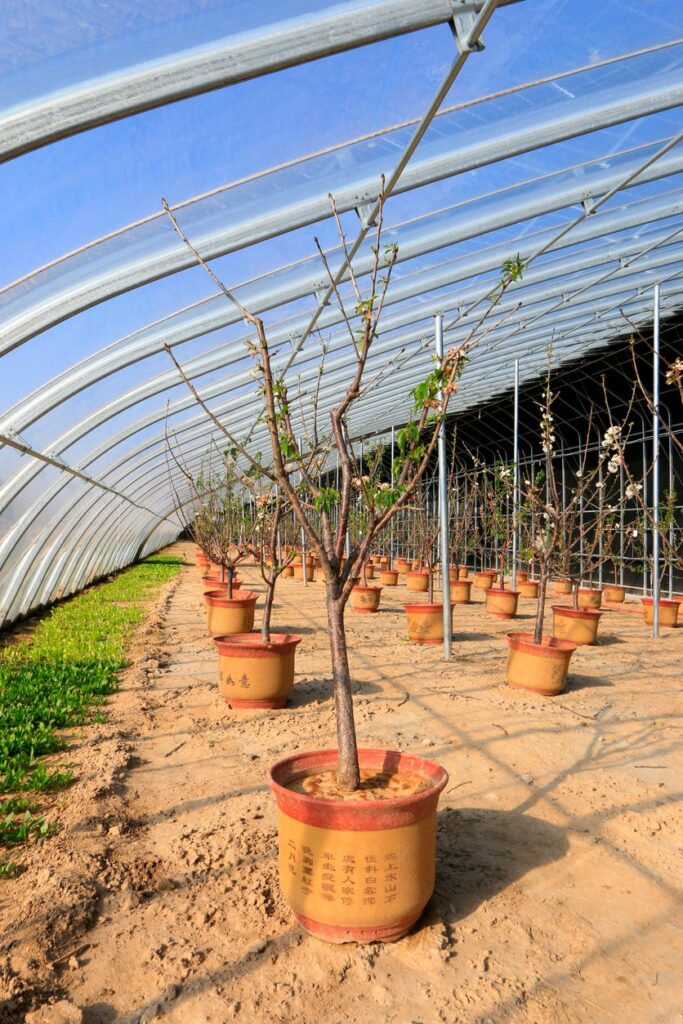
If you’re considering diving into the world of greenhouse gardening and are wondering which fruits to cultivate, you’ve come to the right place. This article will explore the best fruits to grow in a greenhouse, providing you with valuable insights into which varieties thrive in the controlled environment. Whether you have limited space or simply want to extend your growing season, discovering the ideal fruits for your greenhouse can bring you a bountiful harvest and a sense of fulfillment. So, put on your gardening gloves and let’s explore the exciting world of greenhouse fruit cultivation!

This image is property of modernfarmer.com.
Benefits of Growing Fruits in a Greenhouse
Extended Growing Season
One of the major benefits of growing fruits in a greenhouse is the ability to extend the growing season. Traditional outdoor gardening is limited by the changing seasons, but a greenhouse creates a controlled environment where fruits can be grown year-round. By providing a consistent temperature and protection from frost, cold weather, or excessive heat, you can increase the growing season significantly. This means you can enjoy fresh, homegrown fruits even in the winter months.
Controlled Environment
A greenhouse offers a controlled environment for growing fruits. You have the flexibility to adjust factors like temperature, humidity, light, and ventilation to create the optimal conditions for each fruit variety. This control allows you to provide the ideal environment for growth, promoting healthier plants and higher yields. Additionally, it also reduces the risk of plant diseases and pests, as you can minimize their entry into the greenhouse and closely monitor your plants’ health.
Protection from Pests
Growing fruits in a greenhouse provides protection from pests and plant-eating insects. The enclosed structure acts as a barrier, preventing insects from accessing your plants and causing damage. This reduces the need for chemical pesticides, promoting a more organic and environmentally friendly approach to fruit cultivation. With fewer pests to contend with, you can focus more on nurturing your plants and ensuring their optimal growth.
Improved Yield and Quality
The controlled environment in a greenhouse can significantly improve the yield and quality of the fruits you grow. By carefully monitoring and managing the growing conditions, you can optimize factors such as light, temperature, and humidity to promote healthy growth and enhance the flavor of the fruits. This results in larger harvests and fruits with better taste, texture, and appearance. With a greenhouse, you have the opportunity to grow exceptional fruits that are often superior to those grown outdoors.
Considerations for Growing Fruits in a Greenhouse
Available Space
Before deciding which fruits to grow in your greenhouse, consider the available space. Different fruits have varying space requirements, and it’s essential to choose varieties that can fit comfortably within your greenhouse. Plan your layout carefully, ensuring that each fruit has enough room to grow and spread its branches without overcrowding. Proper spacing also helps promote air circulation and reduces the risk of disease.
Light and Temperature Requirements
Light and temperature are crucial factors in fruit production. Most fruits require abundant sunlight to photosynthesize and produce energy, so ensure your greenhouse receives ample natural light throughout the day. If your greenhouse lacks sufficient sunlight, you can compensate by using artificial grow lights to supplement the plants’ needs. Additionally, it’s essential to monitor and control the temperature inside the greenhouse. Different fruits have specific temperature requirements, so maintain the ideal range to support healthy growth.
Pollination
Many fruits require pollination to produce abundant harvests. In a greenhouse, where natural pollinators like bees may not have easy access, you may need to manually pollinate the fruits. This can be done using a small brush or by gently shaking the plants to facilitate the transfer of pollen from the male to the female flowers. Alternatively, you can introduce pollinators like bumblebees or even hand-pollinate each fruit. Understanding the pollination requirements of the fruits you wish to grow will help you ensure successful fruit set.
Maintenance and Care
Growing fruits in a greenhouse requires regular maintenance and care. You will need to monitor the plants for signs of disease or pest infestation and take appropriate action immediately. Regular pruning is necessary to ensure proper airflow and prevent overcrowding, which can lead to disease. Adequate watering and fertilization are also vital to support healthy growth and fruit development. Maintaining a clean and well-organized greenhouse will create an optimal environment for your plants and make care more manageable.
Budget
Consider your budget when selecting fruits to grow in a greenhouse. Greenhouses can be an investment, and the cost of maintaining them, including heating, lighting, irrigation, and regular greenhouse supplies, should be factored into your decision-making process. Choose fruits that align with your budget, ensuring that you can provide the necessary resources to sustain healthy growth and a productive harvest. It’s important to strike a balance between the fruits you desire to grow and the financial feasibility of doing so.

This image is property of greenhouseemporium.com.
1. Tomatoes
Varieties: Determinate vs Indeterminate
When growing tomatoes in a greenhouse, you have a choice between determinate and indeterminate varieties. Determinate tomatoes are bushy and compact, making them suitable for smaller greenhouse spaces. They typically produce a large crop of tomatoes all at once, making them ideal for canning or preserving. On the other hand, indeterminate tomatoes are more vining and continue to grow throughout the season. They produce a steady supply of tomatoes over a more extended period, making them great for fresh consumption.
Growing Conditions: Light, Temperature, Humidity
Tomatoes thrive in full sunlight, so ensure your greenhouse provides at least 8-10 hours of direct sunlight each day. Temperature-wise, tomatoes prefer a range between 70-85°F (21-29°C) during the day and around 60-70°F (15-21°C) at night. Maintaining appropriate humidity levels between 50-70% is crucial, as excessive humidity can lead to diseases like powdery mildew. Proper ventilation and air circulation are important for the overall health of the plants and to prevent common tomato problems.
Care Tips: Pruning, Watering, Fertilization
Pruning is essential for tomato plants, especially in a greenhouse where space may be limited. Regularly remove suckers, the small shoots that develop in the leaf axils, to focus the plant’s energy on fruit production. Watering is crucial to ensure consistent moisture levels in the soil, but be careful not to overwater or let the plants sit in standing water. Fertilize regularly with a balanced tomato fertilizer to provide essential nutrients, especially with a focus on phosphorus and potassium for fruit development.

This image is property of www.gardeningknowhow.com.
2. Cucumbers
Varieties: Slicing vs Pickling
Growing cucumbers in a greenhouse gives you the opportunity to choose between slicing varieties, which are usually longer and ideal for fresh consumption, and pickling varieties, which are smaller and perfect for pickling or preserving. Consider your preference and purpose when selecting cucumber varieties to grow.
Growing Conditions: Light, Temperature, Humidity
Cucumbers require ample sunlight, ideally 8-10 hours of direct sunlight per day. If natural light is limited, consider using supplemental grow lights. The optimal temperature range for cucumber growth is between 75-85°F (24-29°C) during the day and around 60°F (15°C) at night. Maintain humidity levels between 50-70% to prevent issues like powdery mildew, and ensure proper airflow to minimize disease incidence.
Care Tips: Trellising, Pollination, Harvesting
Trellising cucumber plants in a greenhouse helps maximize space and promotes better air circulation, reducing the risk of disease. Cucumbers are typically pollinated by bees, but in a greenhouse where they may not have easy access, you may need to hand-pollinate by transferring pollen from the male to the female flowers using a small brush or by gently shaking the plants. Harvest cucumbers when they reach the desired size, as leaving them on the vine for too long can result in bitterness and reduce production.
(continued in the next message)

This image is property of cdn.shopify.com.

